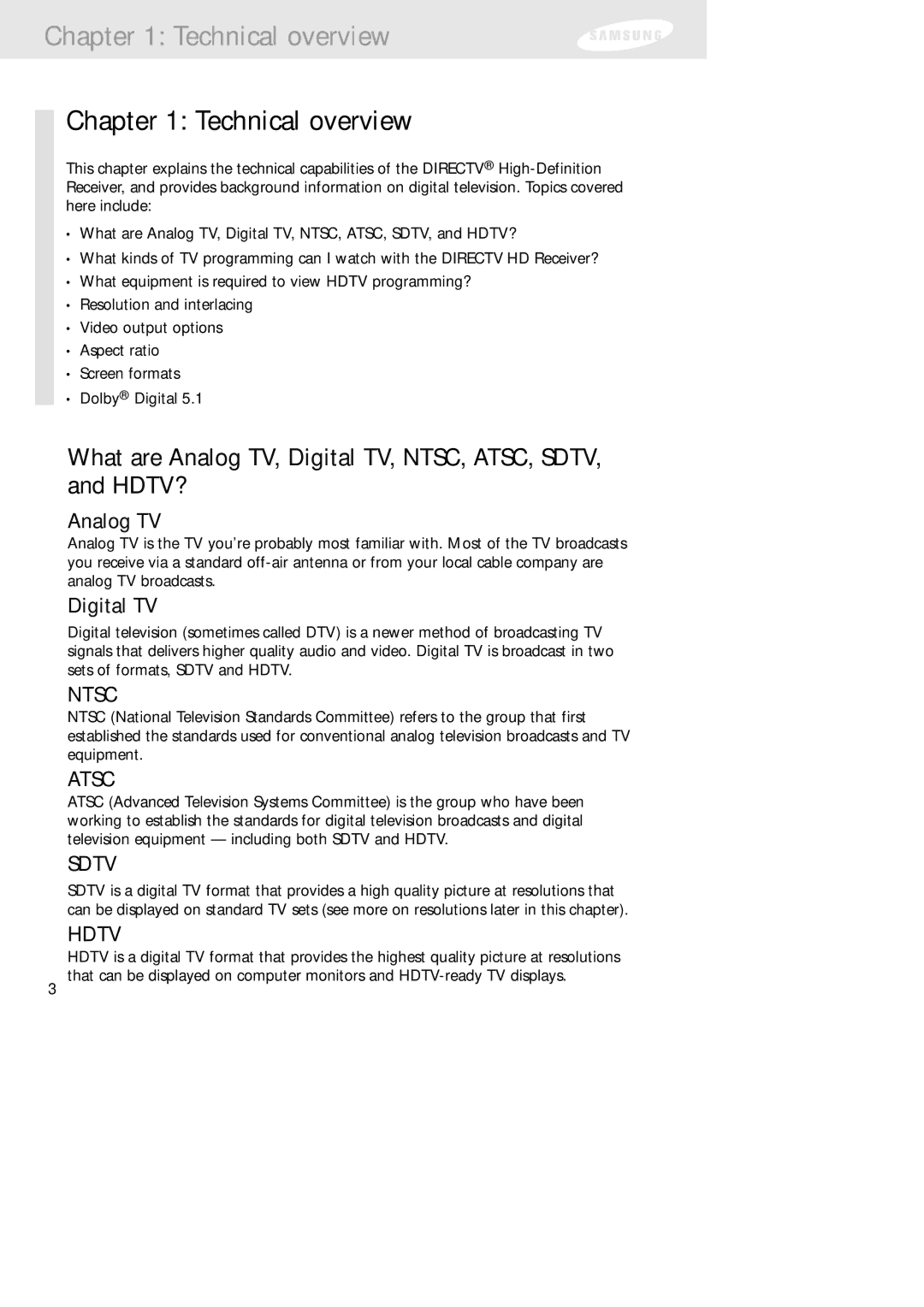
Chapter 1: Technical overview
Chapter 1: Technical overview
This chapter explains the technical capabilities of the DIRECTV®
•What are Analog TV, Digital TV, NTSC, ATSC, SDTV, and HDTV?
•What kinds of TV programming can I watch with the DIRECTV HD Receiver?
•What equipment is required to view HDTV programming?
•Resolution and interlacing
•Video output options
•Aspect ratio
•Screen formats
•Dolby® Digital 5.1
What are Analog TV, Digital TV, NTSC, ATSC, SDTV, and HDTV?
Analog TV
Analog TV is the TV you’re probably most familiar with. Most of the TV broadcasts you receive via a standard
Digital TV
Digital television (sometimes called DTV) is a newer method of broadcasting TV signals that delivers higher quality audio and video. Digital TV is broadcast in two sets of formats, SDTV and HDTV.
NTSC
NTSC (National Television Standards Committee) refers to the group that first established the standards used for conventional analog television broadcasts and TV equipment.
ATSC
ATSC (Advanced Television Systems Committee) is the group who have been working to establish the standards for digital television broadcasts and digital television equipment — including both SDTV and HDTV.
SDTV
SDTV is a digital TV format that provides a high quality picture at resolutions that can be displayed on standard TV sets (see more on resolutions later in this chapter).
HDTV
HDTV is a digital TV format that provides the highest quality picture at resolutions
that can be displayed on computer monitors and
3
